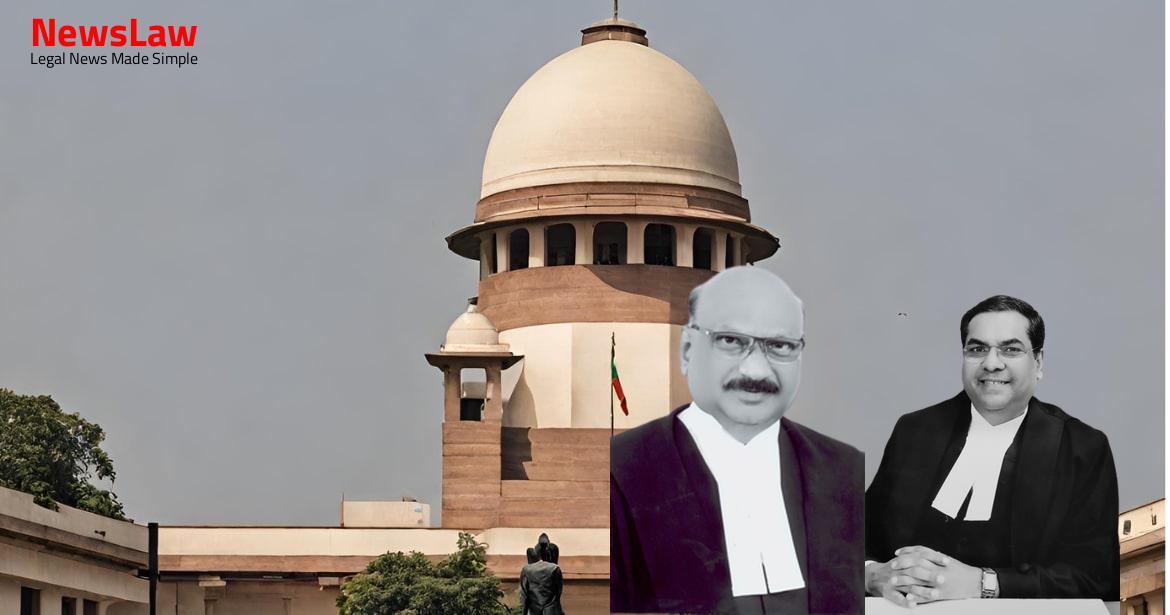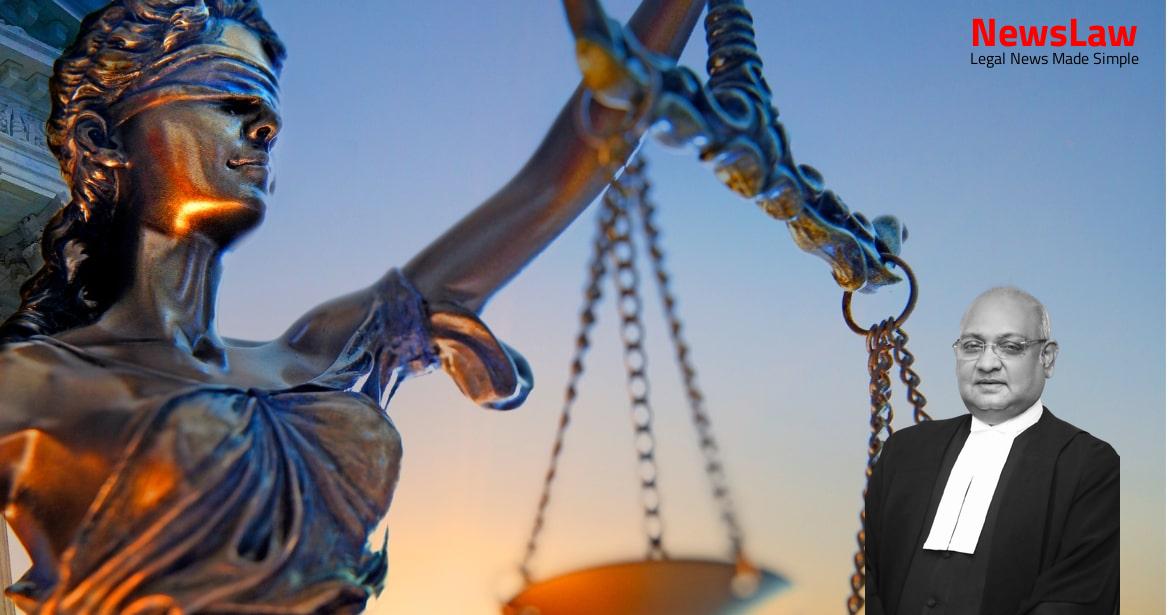In the case of the Glider Insurance Claim, the National Commission ruled in favor of the petitioner against the insurer. The respondent, the insurance company, wrongly repudiated the claim filed by the petitioner, who was a fare-paying passenger on a sightseeing flight involving a licensed glider. The judgment affirms the petitioner’s status as a fare-paying passenger on a standard aircraft. This landmark decision sheds light on aviation insurance laws and definitions.
Facts
- The National Commission determined that a glider qualified as an ‘aircraft’ under the Aircrafts Act, 1934 and was not excluded under the insurance policy.
- It was established that the glider was duly licensed as an aircraft, meeting the necessary requirements for operation.
- The insurer was unable to prove any exclusion for a ‘standard’ aircraft as defined by Canadian or Indian aviation authorities.
- The deceased was considered a fare-paying passenger on a sightseeing flight, falling under the definition of ‘charter’ according to Black’s Law Dictionary.
- The insurance claim was repudiated initially based on the deceased not traveling in a standard aircraft or as a fare-paying passenger, which the National Commission refuted.
- The accident occurred during a sightseeing flight at Pemberton Soaring Centre, involving a collision that resulted in fatalities on both the glider and Cessna aircraft.
- The Commission dismissed hearsay evidence from correspondence with the attorney of the owner of Pemberton Soaring Company, stating that the accident did fall within the policy’s coverage.
- The National Commission ruled in favor of the claimant, directing the insurer to pay Rs. 1 crore with 8% interest per annum.
Also Read: Interpretation of Will Clauses in Property Dispute
Arguments
- Learned Counsel for the Appellant-insurer argued that the accident did not fall within the purview of the Policy.
- The Counsel referred to the definition of ‘glider’ under the 1934 Act and the Glider Flying Handbook published by the United States Department of Transportation, Federal Aviation Administration.
- He highlighted that the Pemberton Soaring Company advertised itself as offering opportunities for non-powered flight, and the pilot had a separate licence for gliding.
- The Aircraft Rules, 1937 distinguished between licences for power-driven and non-power driven aircraft.
- He argued that the definition of ‘aircraft’ under the 1934 Act, which included gliders and balloons, could not be relied upon to exclude such vessels from the meaning of ‘standard type of aircraft’.
- Learned Counsel argued that the deceased was a fare-paying passenger throughout the flight, emphasizing the unfairness of applying different rules based on the engine status of the glider.
- The glider and the Cessna were both registered aircraft under Canadian regulations, meeting all legal requirements for gliding as a business.
- The TSBC Report confirmed the glider’s compliance with rules, and no specific rule was presented to suggest otherwise.
- The glider was consistently described as a standard aircraft with two seats, one for the pilot and one for the passenger.
- The absence of a specific exclusion of gliding in the Policy implied its inclusion.
- The term ‘charter’ indicated the glider was a licensed standard aircraft, rejecting claims to the contrary as hearsay.
Also Read: Preservation of Open Spaces in Development Plans
Analysis
- The exclusionary clauses in the Policy, particularly Clauses 7(ix)(iii) and 7(xiv), pertain to accidental death or permanent disablement suffered while engaging in aviation or aerial activities.
- Accidents while flying or participating in aerial activities are excluded from coverage, except when the insured is a fare-paying passenger in a regular scheduled airline or air charter company.
- Clause 7(xiii) also excludes claims arising from specific adventure sports and activities like bungee jumping, parasailing, and ballooning, but does not explicitly mention gliding.
- Engaging in activities like gliding falls within the exclusion specified in Clauses 7(ix)(iii) and 7(xiv) of the Policy.
- The insurer is liable only if accidents occur while the insured is a passenger in a duly licensed aircraft or balloon, fare-paying or gratuitous.
- Requirements for flying experience for different pilot licenses, such as private pilot’s license for flying aeroplanes or microlight aircraft, are detailed in Schedule II of the Policy.
- The Policy’s exclusionary clauses, stating that the insurer is not liable for accidents during aviation or ballooning activities unless as a passenger in a licensed aircraft, are reiterated for clarity.
- The clauses aim to exclude coverage for accidents during aviation or aerial activities, with exceptions for certain circumstances where the insured is a passenger in a standard type of aircraft.
- The definition of ‘aircraft’ under Section 2(1) of the 1934 Act includes gliders under the Policy.
- The nature of the glider involved is crucial in determining if it is a ‘standard’ or ‘non-standard’ aircraft.
- The glider must be considered an aircraft under the Policy despite being motorized for self-launching.
- The Pemberton Soaring Centre was found to be an air charter company as per the Policy.
- The insurance investigator Diligence’s report after the second investigation was not considered due to the timing and lack of relevance.
- The Policy does not define ‘standard type of aircraft,’ leaving room for interpretation in favor of the insured.
- It was held that the licensed glider involved in the accident was duly licensed.
- The deceased individual on the glider was considered a fare-paying passenger as described in the Policy.
- The ICAO distinguishes between scheduled and non-scheduled flights regarding air charter services.
- Glider pilots’ licenses have specific requirements based on aircraft type.
- The Policy’s use of terminology impacts the interpretation against the appellant.
- The single-entity charter concept was cited in defining air charter services.
- The glider’s seating capacity of two persons is a factor in determining its classification as a ‘standard’ aircraft.
- Requirement of uberrima fides i.e. good faith on the part of the assured in a contract of insurance.
- Contract is likely to be construed contra proferentem in case of ambiguity or doubt.
- If there is any ambiguity or a term capable of two interpretations, one beneficial to the insured should be accepted.
- Words of a document shall be construed against the party who prepared the document in case of ambiguity.
- No ambiguity in the expression ‘impact’.
- The accident leading to the claim was covered under the policy as the deceased was traveling in a licensed standard aircraft.
- The deceased was a fare-paying passenger on a flight of an air charter company, which was also covered under the policy.
- The judgment found that the Appellant wrongly repudiated the claim filed by the Petitioner.
- The journey on the glider was undertaken for a fixed consideration, confirming the deceased as a fare-paying passenger.
- The National Commission’s decision was affirmed regarding the deceased being a fare-paying passenger on the glider.
Also Read: Jurisdictional Limits and Statutory Compliance in Development Planning
Decision
- The instant appeal is dismissed.
- The decision is final and binding.
- No further action is required from the parties involved.
Case Title: BHARTI AXA GENERAL INSURANCE CO. LTD Vs. PRIYA PAUL (2020 INSC 148)
Case Number: C.A. No.-003346 / 2018



